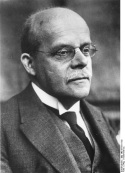Matthias Erzberger
1875-1921
- Head of the armistice committee
- Finance Minister
- Murdered in 1921
At the start of World War I, Matthias Erzberger was still pushing for victorious peace, but later on he called for peace without annexations. His peace resolution met with majority approval in the Reichstag in 1917. In October 1918, he joined Max von Baden’s cabinet and became chairman of the armistice committee. In this role, he signed the armistice on 11 November. In Scheidemann’s cabinet, he was a minister without a specified portfolio and spoke out for the acceptance of the Treaty of Versailles. Embittered opponents rose up against him because of this stance. Erzberger become Reichskanzler Gustav Bauer’s Finance Minister in June 1919. His reforms laid the foundations for today’s tax system in Germany. Yet right-wing forces directed their propaganda against him because of his reforms’ increase of the tax burden on assets. His legal action against these attacks failed. In 1920, he left his post as minister and one year later, he was murdered.










